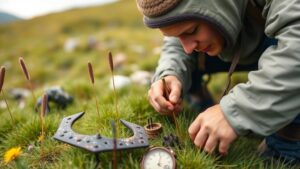Techniques for Documenting and Sharing Your Treasure Finds
Techniques for Documenting and Sharing Your Treasure Finds
The field of treasure hunting is as rich in history as it is in adventure. Beyond the excitement of finding artifacts or valuable items, effectively documenting and sharing these discoveries is crucial for preservation, legal compliance, and community engagement. This article explores various techniques for documenting and sharing treasure finds, emphasizing the importance of thorough documentation, digital tools, and community outreach.
Importance of Documentation
Documenting treasure finds is essential for a variety of reasons. It not only serves legal purposes but also helps contribute to historical records and personal collections. For example, a documented find can provide provenance–an account of its history and ownership–which can significantly enhance its value.
Also, thorough documentation aids in research and scholarly work. Artifacts can provide insights into past civilizations, trade routes, and cultural practices. Failure to document these finds may result in lost opportunities for academic exploration and public education.
Key Techniques for Documenting Finds
The following techniques ensure that your discoveries are well-documented and accessible for future reference or sharing with interested parties.
- Field Notes: Always start with comprehensive field notes during the discovery process. Record details such as the date, time, location (GPS coordinates), environmental conditions, and the context of the find (e.g., nearby structures or geographical features). The more specific, the better.
- Photographic Documentation: Use high-quality photographs to capture the artifacts from multiple angles. Include close-ups of any inscriptions or distinguishing features. This visual evidence complements written notes and aids in identification.
- Condition Reports: Document the condition of the item upon discovery. Detail any damage, corrosion, or restoration efforts. This information is vital for future conservation and valuation.
- Legal Considerations: Understand and comply with local laws regarding treasure finds, which may require reporting to authorities or adhering to specific regulations. Document any legal notifications or permits obtained.
Using Digital Tools for Documentation
In todays digital age, leveraging technology greatly enhances the documentation process. Here are several digital tools that treasure hunters can utilize:
- Apps for Field Recording: Applications such as Evernote or Google Keep can be used to jot down field notes efficiently. e apps allow users to attach photos and voice memos, creating a comprehensive digital record.
- Geotagging: Use GPS apps or devices to log exact locations where finds are made. This data can be saved to mapping applications like Google Maps for future reference or group displays.
- Database Software: Use database software like Microsoft Access or specialized archaeological databases to create a searchable inventory of your finds. This system helps in tracking items, noting their conditions, and storing essential documentation.
- Cloud Storage: Store documentation and images in cloud services (e.g., Google Drive, Dropbox) to ensure they are backed up and accessible from multiple devices. This is particularly important for sharing with others.
Sharing Your Finds with the Community
Once documentation is complete, sharing your treasures can bring immense joy and educational opportunities to others. Consider the following methods for effectively sharing:
- Social Media: Platforms like Instagram and Facebook are excellent for sharing your discoveries with a broader audience. Use hashtags and specialized groups to connect with fellow treasure hunters and history enthusiasts.
- Public Exhibits: Collaborating with local museums or community centers to create exhibits can provide a platform for sharing your finds. This not only educates the public but also encourages interest in local history.
- Online Forums and Blogs: Engage with online communities such as Reddits r/treasurehunting or create a blog dedicated to your finds. These forums are valuable for receiving feedback, insights, and connecting with like-minded individuals.
- Workshops and Lectures: Host workshops or lectures at local schools or community organizations to discuss your finds. This interaction fosters local interest in history and archaeology, perhaps inspiring the next generation of treasure hunters.
Real-World Case Study
A notable example of effective documentation and sharing is the case of the Hoard of the Nantes. This treasure trove, unearthed in France, consisted of Roman coins and jewelry. finders meticulously documented their process: recording GPS coordinates, taking detailed photographs, and collaborating with archaeologists for identification and historical context.
Eventually, they organized a community exhibit at a nearby museum, where they showcased their documentation along with the actual artifacts. The event not only educated the public about the Roman influence in their region but also led to further archaeological inquiries in the area.
Actionable Takeaways
As aspiring treasure hunters or collectors, following these documentation and sharing techniques will allow you to maximize the impact of your finds. Remember to:
- Keep detailed field notes and condition reports.
- Use digital tools for efficient recording and storage.
- Engage with your community through sharing platforms and events.
By effectively documenting and sharing your treasure finds, you not only preserve history but also contribute to a wider narrative of cultural exploration and appreciation.


